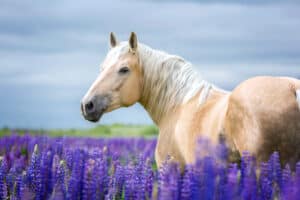Horses are common domesticated livestock animals in many parts of the world. They serve many uses, from draft horses to racehorses, all domestic horses have been bred for specific purposes. Scientists believe the first horses were domesticated around 6,000 years ago. Since then, humans have selectively bred them for specific traits, resulting in a proliferation of horse types throughout the world. But, just how long is a horse’s gestation period, and how long are they pregnant?
Here, we’ll learn more about the horse as an animal before diving into the details of the reproductive cycles. We’ll start by learning what different types of horses look like and how big, or how small, they grow. Then, we’ll go over horse behavior and what’s normal for a horse. After that, we’ll look at how long horse gestations last and how many foals a mare can have in her lifetime. Finally, we’ll discover how to tell whether or not a horse is pregnant and how common twins are in horses.
Keep reading to learn more about horse gestation periods!
Species Profile: The Horse
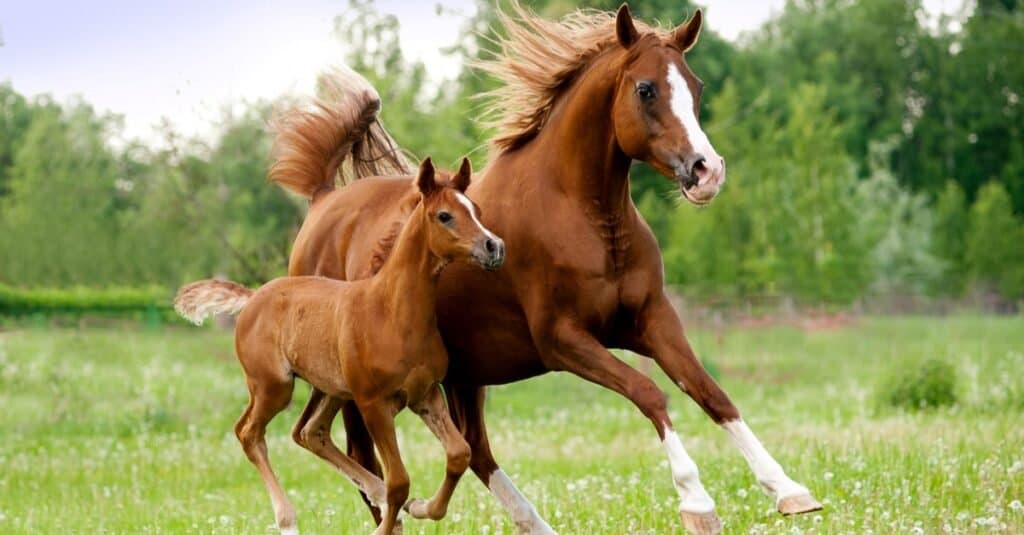
Female horses are known as mares, while males are either stallions or geldings.
©Olga_i/Shutterstock.com
Appearance
Most people are familiar with what horses look like, but would you believe that horses’ wild ancestors were actually much smaller and sturdier than the horses of today? Today’s horses have four long legs built for running, long bodies with flat backs, and graceful, upright necks topped with narrow, attentive faces.
Horses come in a wide variety of colors and patterns. Some, like mustangs and paint horses, are bred specifically for their coloring. Horses may be white, black, brown, yellow, or anything in between. In addition to their coats, horses also have long manes and tails, which they use to keep flies away from their skin.
Size
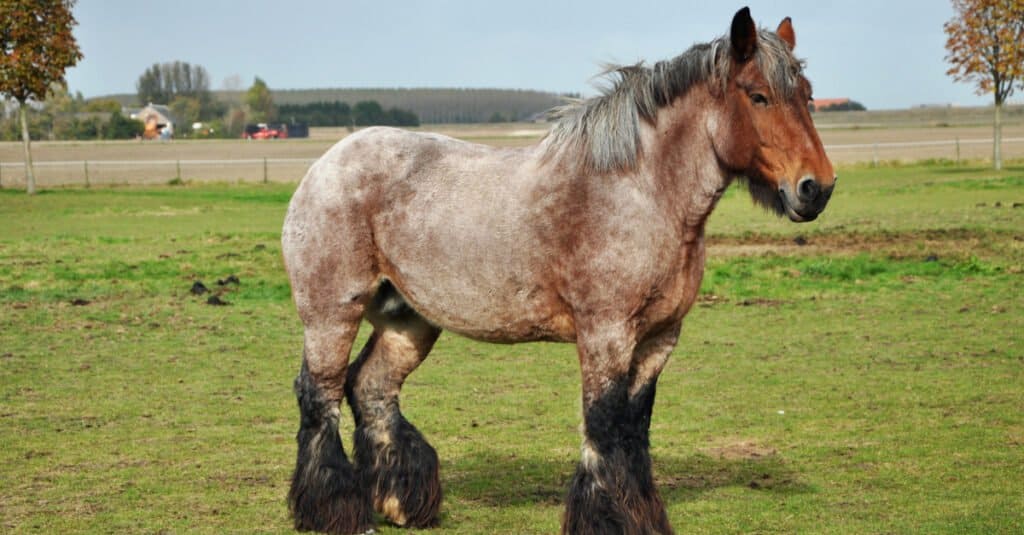
Horses range in size from small ponies to gigantic draft horses.
©defotoberg/Shutterstock.com
Today’s horses range in size from about 14-20 hands (one hand equals four inches). Anything under 14 hands tall is considered a pony, which is just another word for a small horse. Horses even bigger, like Shire horses, and horses even smaller, like miniature ponies, are still considered horses. More than that, all of today’s horses are genetically the same species. So, no matter the size, horse gestation has a consistent length.
Behavior
Like sheep, cows, and even goats, horses are herd animals. They’re incredibly social, and in the wild, rely on the safety of the herd to avoid predators like wolves, bears, and mountain lions. Domestic horses rarely have to worry about avoiding predators, but they still retain a strong herd instinct.
Horses don’t eat a variety of foods, like dogs, and they don’t eat meat, like lions and tigers. Instead, horses evolved to consume a diet made up almost entirely of grasses and similar forbs. Because of their rough diet, horses’ teeth wear down rapidly. In fact, veterinarians, experienced owners, and breeders determine a horse’s age by the condition of its teeth.
How Many Days are Horses Pregnant?
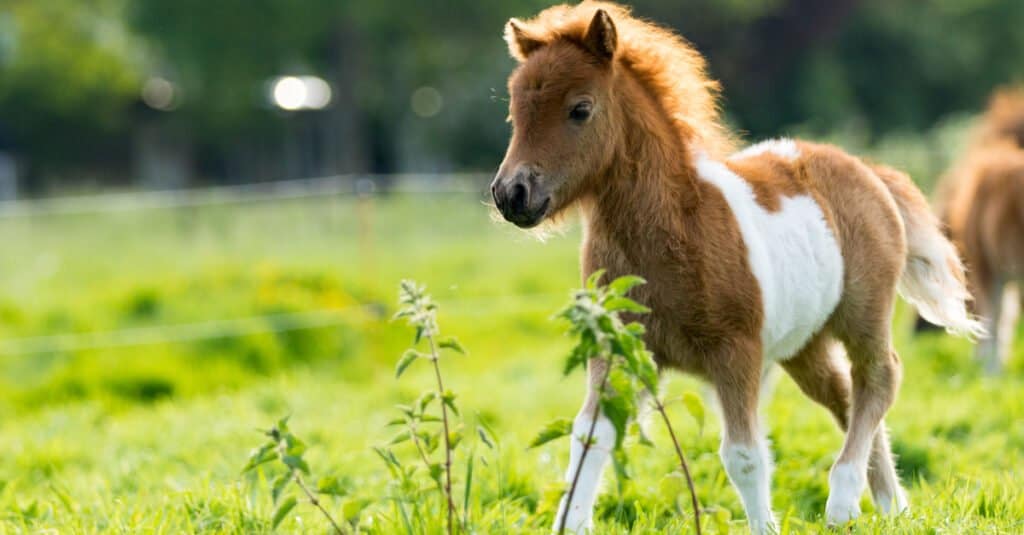
Horses’ gestation lasts from 320-360 days.
©Marlinda vd Spek/Shutterstock.com
Horse gestation is a little different than human gestation. Where humans are pregnant for almost ten months, horses actually have a 40-day variance in the length of their gestation. Horse gestation lasts anywhere from 320-360 days. That means horses can be pregnant for anywhere from 10.5 months to a full year.
Horses don’t have babies at just any time of year, though. Mares go into estrous (during which they can become pregnant) about every 21 days, but only from spring to late fall. Mares don’t generally go into estrous in the winter or early spring. Somewhere between 10.5 and 12 months later, the mare gives birth to a baby known as a foal.
Can Horses Have Twins?
Horse gestation doesn’t result in a litter of young, as in mice, but rather in a single foal. Mares occasionally have twin foals, but twins are rare in horses. Each foal learns to walk within hours of birth. Horses are creatures of flight, and it’s important that they be able to outrun would-be predators. So, if baby horses couldn’t walk as soon as they can, they would be sitting ducks for whatever predator came around first. Foals are weaned by the time they’re 18 months old.
How Long Can Mares have Foals?
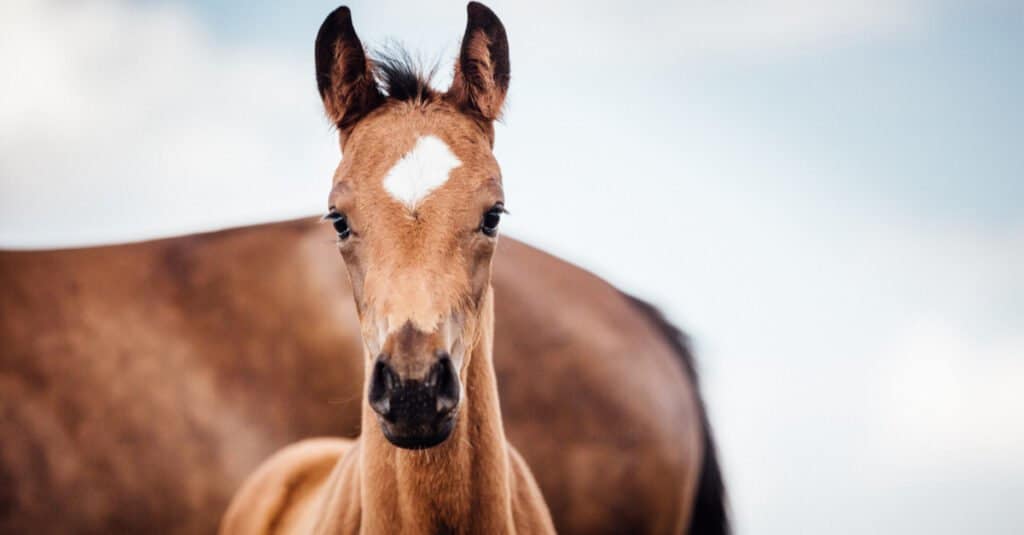
Most horses live between 25-30 years. However, a mare’s reproductive capabilities do not last her entire life.
©Inesmeierfotografie/Shutterstock.com
Horses usually live between 25-30 years. A few have been documented living even longer, but, for the most part, you can expect your horse to live to around 30. Mares are capable of delivering babies all the way into their early twenties. Like humans, once a mare reaches her late teen years (middle age for a horse) her fertility begins to wane.
How Can You Tell if a Horse is Pregnant?
In horse gestation, the only sure-fire way to know that a mare is pregnant is through an ultrasound scan. Ultrasounds can be performed as early as 16 days into the pregnancy. Other signs of pregnancy include anovulation. In other words, if the mare no longer goes into heat, she may be pregnant. However, some mares continue to display signs of estrous long into their gestation. Another sign of pregnancy in mares is the swelling of the abdomen; the larger the foal grows, the bigger the mare’s stomach gets. But, not all mares ‘show’ to the same degree, and some may not show until the final weeks of their gestation.
The photo featured at the top of this post is © Erica Hollingshead/Shutterstock.com
Thank you for reading! Have some feedback for us? Contact the AZ Animals editorial team.




